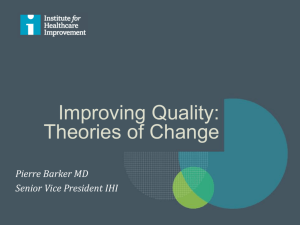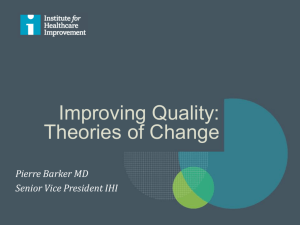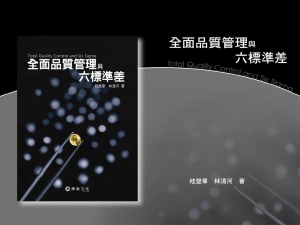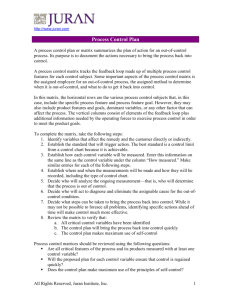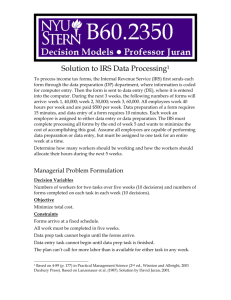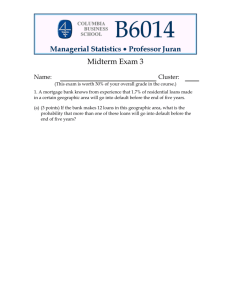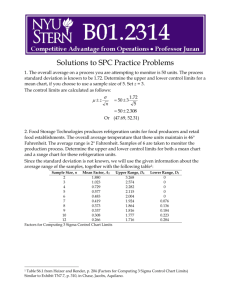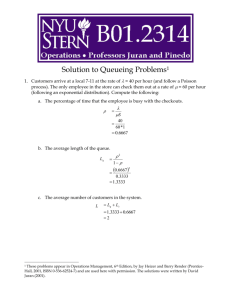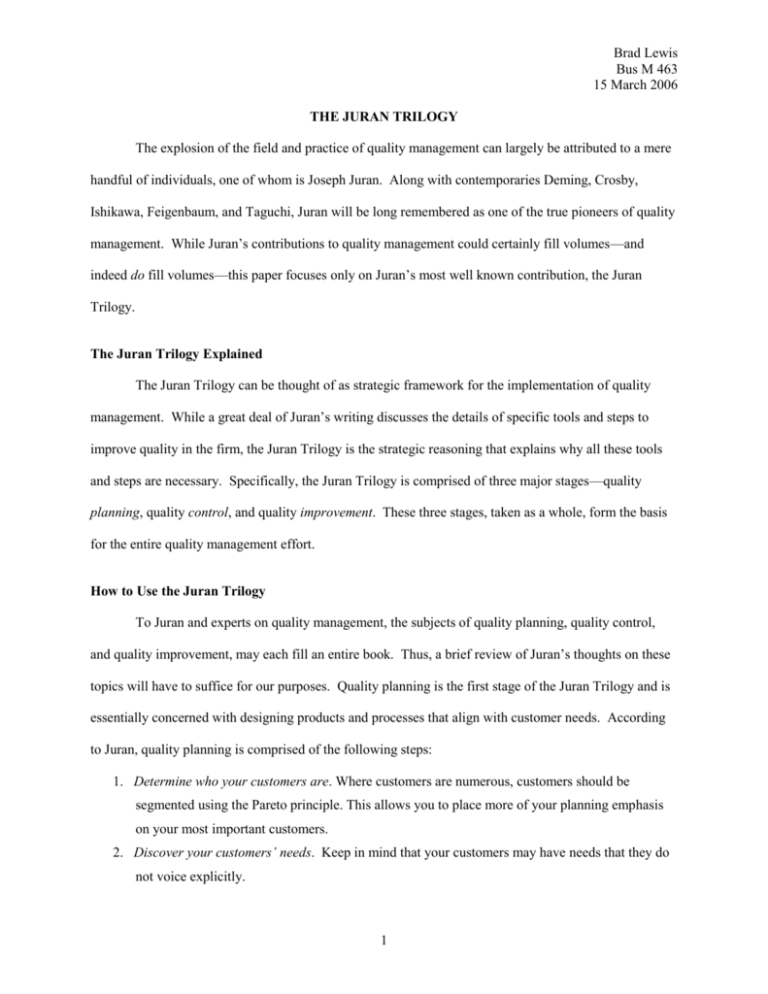
Brad Lewis
Bus M 463
15 March 2006
THE JURAN TRILOGY
The explosion of the field and practice of quality management can largely be attributed to a mere
handful of individuals, one of whom is Joseph Juran. Along with contemporaries Deming, Crosby,
Ishikawa, Feigenbaum, and Taguchi, Juran will be long remembered as one of the true pioneers of quality
management. While Juran’s contributions to quality management could certainly fill volumes—and
indeed do fill volumes—this paper focuses only on Juran’s most well known contribution, the Juran
Trilogy.
The Juran Trilogy Explained
The Juran Trilogy can be thought of as strategic framework for the implementation of quality
management. While a great deal of Juran’s writing discusses the details of specific tools and steps to
improve quality in the firm, the Juran Trilogy is the strategic reasoning that explains why all these tools
and steps are necessary. Specifically, the Juran Trilogy is comprised of three major stages—quality
planning, quality control, and quality improvement. These three stages, taken as a whole, form the basis
for the entire quality management effort.
How to Use the Juran Trilogy
To Juran and experts on quality management, the subjects of quality planning, quality control,
and quality improvement, may each fill an entire book. Thus, a brief review of Juran’s thoughts on these
topics will have to suffice for our purposes. Quality planning is the first stage of the Juran Trilogy and is
essentially concerned with designing products and processes that align with customer needs. According
to Juran, quality planning is comprised of the following steps:
1. Determine who your customers are. Where customers are numerous, customers should be
segmented using the Pareto principle. This allows you to place more of your planning emphasis
on your most important customers.
2. Discover your customers’ needs. Keep in mind that your customers may have needs that they do
not voice explicitly.
1
3. Develop products whose features align with the customers’ needs. Utilize tools such as Quality
Function Deployment—also known as the House of Quality—to translate customer needs into
product specifications.
4. Develop processes that are capable of producing these products along with their accompanying
features.
5. Hand these plans off to operations. Often this entails an abrupt transition of responsibilities as the
quality planning team moves on to the next planning project.
The second stage of the Juran Trilogy is quality control. After the planning team hands its plans
off to operations and production begins, the firm should simultaneously take steps to ensure that its
operations maintains the level of quality that was planned for (based on the products and processes that
were designed). This is the purpose of quality control. According to Juran, quality control is comprised
of the following three steps:
1. Evaluate actual operating performance. It is important that you know what to measure; i.e., those
dimensions that are important enough have operating goals attached to them. Statistical tools are
very useful for evaluating operating performance.
2. Compare actual performance to operating goals. In addition to merely comparing, you should
again use statistical tools (as well as common sense) to interpret the meaning of any differences
between performance and goals.
3. Take action in response to differences. Because your operating goals should be based on your
processes’ capabilities, you should find that any differences between performance and goals are
merely sporadic and attributable to unique, identifiable process breakdowns. Often the corrective
actions for such problems are as simple as replacing a worn-out part or re-adjusting a machine
component.
Quality improvement is the third and final stage in the Juran Trilogy. Improvement goes beyond
control in that it allows the firm’s operations to reach levels of quality heretofore unattainable. The
quality improvement process does this by removing the chronic quality problems that were built into the
products and processes in the planning process. Additionally, the organizational learning that occurs
during quality improvement efforts—the “lessons learned”—should be taken into account and utilized,
where applicable, in future quality planning. According to Juran, quality improvement includes the
following steps:
2
1. Establish the infrastructure needed to facilitate continuous quality improvement. This step should
include the formation of a standing Quality Council whose responsibility it is to ensure that
quality improvement efforts receive sufficient attention, effort, and resources.
2. Identify specific improvement projects. The Quality Council should consult employees, customers
(via market research), and cost-of-poor-quality data in identifying potential projects. If this is
your firm’s first quality improvement project, the Council should select a project that has a high
chance of success, deals with a significant and perhaps long-neglected problem, and is easily
measurable in terms of results. Subsequent projects should be selected on the basis of the
expected financial return on investment, the urgency of the problem, the amount of the potential
improvement, and so forth.
3. For each project, establish a team that is clearly charged with the responsibility of bringing a
successful resolution to the project. At a minimum, the following departments should be
represented on the team:
The ailing departments – the departments most adversely affected by the problem.
The suspect departments – the departments generally believed to be the source of the
problem.
The remedial departments – the departments most likely to be able to solve the problem.
The diagnostic departments – the departments with the resources to diagnose the
problem.
4. Provide project teams with the necessary training, resources, and motivation to successfully
complete the project.
An Example of the Juran Trilogy at Work
Figure 1 offers a graphical example of the Juran Trilogy that will be explained here. Before
operations begin, the example firm shown here performs the first stage in the trilogy, quality planning.
Thus, before operations begin, the planning team identifies the firm’s customers, assesses their needs, and
develops a product that meets those needs and processes capable of producing the product. When
operations for this product begin, the firm initially experiences a relatively high defect rate hovering just
above 20 percent. This defect rate, as it turns out, is what the firm planned for by way of the product
features and processes it developed. In the meantime, the firm practices quality control by attempting to
maintain the status quo in terms of quality. The firm shown here experiences a “spike” in its defect rate,
and it is the quality control team that deals with this sporadic occurrence, solves the problem, and brings
the defect rate back into the zone of control. At some point during this process’s operations, the firm’s
3
Figure 1 – The Juran Trilogy Diagram
Quality Council decides to target this particular process for quality improvement efforts due to its high
level of “chronic waste”—quality problems built into the process during the planning stage. Following
the improvement steps discussed previously, improvement project team successfully diagnoses and
remedies the source of the chronic waste. The result is a breakthrough in quality improvement. The
defect rate drops sharply—not in a sporadic fashion, but in a permanent fashion—until it begins to hover
around its new baseline (about five percent, in this case). Thus, this process has reached a new, muchimproved zone of quality control. The quality control stage is ongoing, so the quality control team
continues to maintain the process’s status quo, albeit a “new” status quo. Lastly, the firm utilizes a
system of organizational learning to capture the lessons that were learned during the improvement stage.
Future planning teams will be able to take advantage of this learning in the future to develop processes
that contain less chronic waste to begin with.
For More Information / Bibliography
The following sources contain a great deal of information on the Juran Trilogy, statistical tools,
and/or Quality Function Deployment (or House of Quality). These sources also constitute my
bibliography for this paper:
4
Foster, S. Thomas. Managing Quality: An Integrative Approach, Ed. 2 (Upper Saddle River, NJ: Pearson
Prentice Hall, 2004).
Juran, J.M. and Frank M. Gyrna, Eds. Juran’s Quality Control Handbook, Ed. 4 (San Francisco:
McGraw-Hill Book Company, 1988).
Juran, J.M. Juran on Leadership for Quality: An Executive Handbook (New York: The Free Press, 1989).
Juran, J.M. Juran on Planning for Quality (New York: The Free Press, 1988).
Juran, J.M. Juran on Quality by Design: The New Steps for Planning Quality into Goods and
Services (New York: The Free Press, 1992).
5

